This short essay aims to deconstruct and challenge the heterogeneity claims made by certain universities. Such a challenge is informed by Phule-Ambedkarite scholarships. It is not original. It is a reiteration of old, relevant facts. This essay is timely as we are increasingly witnessing hysteric and glorious accounts on nation and universities (across party lines). What seems to be missing (or deliberately pushed under the carpet) is the critique of Brahmin-Savarna supremacy on material and cultural resources everywhere, including universities.

Brahmin-Savarnas occupy Strategic Posts
In JNU, teachers and students have come together to stage a united fight against organised Hindutva forces and militarization of the campus. As per one of the speakers, their fight aims at saving the soul of ‘India’ by defending its ‘universities’. One may agree or disagree with them. However, one cannot fail to notice the caste and class differences between the teachers and the students.
While students form a relatively heterogeneous group, thanks to affirmative action; teachers continue to be dominated by Brahmins and other Savarnas (hereafter Brahmin-Savarnas). Is this difference a problem?
Well, such ‘differences’ are part of all campuses in India.
The statistics of All India Survey in Higher Education is quite instructive. Though the survey doesn’t ‘count’ upper-castes separately, one can safely say that 66% of all teaching positions are occupied by ‘Non-SC, ST, OBC, Muslim, Other religious Minority and PwD’ teachers. Who form ‘Non-SC, ST, OBC, Muslim, Other religious Minority and PwD’ teachers, is anybody’s guess! If 66% of all teachers come from Brahmin-Savarna backgrounds, it effectively means that all important decision-making bodies in higher education are dominated by privileged social groups, who are historically part of the ruling social class.
This being the case, it is hard to believe that teachers and students would have the ‘same’ or ‘similar’ intentions behind saving public-funded universities. The powerful groups dominating powerful posts would want to save the university to maintain their power and control over resources, irrespective of their progressive lip service. We do not have many reasons to think otherwise. For example, have we witnessed Brahmin-Savarna teachers forming human chains or organising hunger strikes to fill SC/ST/OBC backlog positions in Universities?
On the other hand, Dalit-Bahujan and other minority students would want to save universities (or any other pubic-funded institution) to essentially dismantle its status-quo and claim their rightful share.
This contradiction in interests should be historicised and analyzed carefully. We can build meaningful solidarities only if we show the courage to face conflicting histories and interests.
The formation of the Independent Indian State consolidated the Brahmin-Savarna supremacy in no simple ways. We can go through the community and genealogical histories of several groups to understand the ways in which they ensured their inclusion (and over-representation) by denying equal opportunities to others and maintaining the status quo.
Let us briefly look at one example. This example or rather a case study appears in an essay written by C. J. Fuller and Haripriya Narasimhan titled ‘From landlords to software engineers: migration and urbanisation among Tamil Brahmans.’ They collected eighteen such genealogical accounts to understand the generational movement of Tamil Brahmins –
Nagalingam, born in 1927, belongs to one of Tippirajapuram’s leading landed families. Both his grandfathers were landlords there; his father qualified as an accountant, but did not practice and instead looked after his land, which Nagalingam has retained. Nagalingam is also an auditor still working in the City Union Bank (CUB), which is largely controlled by Vattimas. He went to college in Madras and qualified as a chartered accountant in 1953. He first worked for a central government department in Jaipur and Calcutta, and later joined a leading private-sector company, but he fell ill and returned to Tippirajapuram in 1963, where he practiced accountancy….Nagalingam and his wife have two sons in their forties, both auditors in Chennai, and one daughter in her fifties who is a housewife married to a doctor living in Ohio and has three children, all trainee doctors. Nagalingam’s father had one brother, whose only daughter, Rajalakshmi, also born in 1927, married a landlord, and they have four children, now in their fifties. Rajalakshmi’s elder son works for the CUB in Coimbatore and the younger son works in Bangalore for a financial advice and services company started in Chennai in 1974 by Vasudevan, Rajalakshmi’s younger daughter’s husband, who is also a chartered accountant. Vasudevan’s elder daughter is an IT professional living in the United States, his younger daughter is married to CUB manager in Kumbakonam, and his son works for his father’s company in Chennai. Rajalakshmi’s elder daughter is married to her cross-cousin (once removed), a landlord in another Vattima village, and they have three sons, one working for the same financial company in Mumbai (Bombay) and the other two for software companies in Chennai. Nagalingam’s father also had one sister, whose four sons, all born in the 1930s, are respectively two retired lawyers, who practiced in nearby Kumbakonam and Mayuvaram, and two landlords (one just mentioned as married to his cross-cousin). Each lawyer had two sons: one works for the CUB in Tirucchirappalli, and three are in Chennai, one in a large private-sector company, one in business, and one an accountant.
In Nagalingam’s family, banking and accountancy have been common occupations, mostly practiced in Chennai and other Tamilnadu towns.
Fuller and Haripriya’s essay try to make sense of the ‘over-representation’ of Tamil Brahmins in IT professions. They contextualise it in the history-induced migration of this group. The essay is not political in any measure but it captures the objective realities which led to Tamil Brahmin expansion in strategic sectors.
In the above example, we would find that quite a few individuals from Nagalingam’s family are chartered accountants. There are historical reasons for the same. During the British rule, land settlements were administered through the village accountants and headmen. Most of the accountants were Brahmins.
These ‘revenue Brahmins’ (as Conlon refers to them, quoted in Fuller) started migrating to towns and cities to man several state jobs. One also needs to note that most of the Tamil Brahmin landlords received proprietary rights under the ryotwari system and were exempted from tax payments as they owned ‘inam’ land or ‘gifted’ land. Their preferred ‘life’ of wealth and ‘education’ was made possible by their total non-involvement with any labour in the field. All the labour was outsourced to the Dalit-Bahujan communities.
In 1891, the only group to draw salaries above Rs.500/month in Travancore Services was the Foreign Brahmin (mostly Tamil Brahmins)[1]. Kannadiga Brahmins sought affirmative action against Tamil Brahmins in the Mysore Presidency, owing to the latter’s ‘over-representation’ in services. The ‘Malayali Memorial’ submitted in 1891 was a concerted effort mostly by Nairs, Syrian Christians and marginally by Ezhavas against the supremacy of Tamil Brahmins.
It should be noted that Dalits were not included in this endeavor. More than 10,000 Nairs, Syrian Christians and Ezhavas gave a written petition to the Travancore State, asking for representation in state jobs. While the state considered the demands of the Nairs and Syrian Christians, the Ezhavas were denied any opportunity and nobody really bothered about the Dalits.
The formation of ‘Indian State’ does not weaken the position of the Tamil Brahmin. In fact you would find an explosion of opportunities and choices for them in public and private sectors. This is the case with most of the Brahmin-Savarna groups.
We need to bear in our minds that Universities, like other state-supported public institutions, have been the meeting place of the ruling social classes or the Brahmin-Savarnas. Educational Institutions of National Importance have always witnessed an alarming presence of these groups. JNU or any other university is no exception. If one goes through the surnames of teachers in the JNU faculty directory, one would find an alarming diversity of Brahmin-Savarna surnames cutting across religion and region. I could list almost seventy such surnames, many of them often appeared more than five times in the list. Let us be assured that the situation would be no different in other universities. What does this supremacy indicate? It tells us about the nature of public institutions – its composition, its beneficiaries and decision-makers.
In his message to the Maratha Community (dated March 23, 1947) Dr. B.R. Ambedkar writes-
“The Brahmin Community is able to maintain itself against all odds, against all oppositions; it is due to the fact that strategic posts are held by Brahmins”
Babasaheb points out that Brahmins, a numerical minority, continue to maintain their supremacy by ‘having a controlling influence on the State’. Such an influence is assured through the ‘capture’ of strategic posts. Even during the Muslim rule in India, key ministerial berths were captured by Brahmins[2]. Such capture over finite resources and positions has meant exclusion and betrayal of the majority.
In the light of the above discussion, let us reflect on a few statistics provided by the Deputy Registrar of JNU to the Parliament in 2013 and 2014[3].
As per 2013 data, number of SC/ST/OBC vacant teaching posts is as follows –
(a) SC
Professor: 23
Associate Professor: 34
Assistant Professor: 11
(b) ST
Professor: 10
Associate Professor: 15
Assistant Professor: 03
(c) OBC
Professor: Not applicable
Associate Professor: Not applicable
Assistant Professor: 10
SC/ST reservation in Associate professor and Professor levels were adopted in 2007 by the JNU Executive Council. OBC reservations (27%) have not been adopted at the level of Associate professor and Professor. In 2014 more than half the sanctioned OBC positions at the Assistant Professor level remained vacant, even after seven years of adopting the implementation of 27% OBC reservation. According to replies to an application under the Right to Information (RTI) Act filed in 2015, there are 29 OBC assistant professors, which is again less than the sanctioned positions.
Let us take a look at the non-teaching Group C and D positions at JNU. As per the Deputy Registrar, between 2009 and 2013, JNU has not appointed a single SC cook. In spite of 10 sanctioned positions. 141 Safai Karamchari positions were exclusively 'chalked out' only for SCs. During the same period the appointments of Vice-Chancellor, Registrar, Finance Officer and Librarian were made under the 'Unreserved categories'.
None of these statistics should come to us as a surprise. It simply reaffirms that universities are like any other place within a Brahmin-supremacist, patriarchal caste order.
Dalit-Bahujan diversity cannot be achieved by ‘reserving’ 141 sanitation worker posts for SCs, nor can it be achieved only through implementation of affirmative action in enrolling students. Heterogeneity can be meaningful only when it is achieved at the higher echelons of power and decision-making.
We also need to acknowledge that increasing student heterogeneity of certain universities is simply a faint reflection of the real heterogeneity of our geography. We are more than 5000 castes and tribes with several sub-groups, genders, speaking distinct languages, residing in varied geographies, involved in diverse occupations.
To my mind, ‘heterogenising’ universities would ideally mean
(a) Establishment of fully state-supported universities in accessible physical and cultural locations
(b) Universalization of University education: Where everybody has a right to University Education
(c) Active participation and agency of all castes and tribes in accessing and shaping Higher Education
(d) Meaningful affirmative action in teaching, non-teaching/administrative positions. However, all these conditions go against the grain of the established Brahmanic and neo-liberal order. Implementing these conditions would also mean decentralizing Higher Education and dismantling the false hierarchies of state and central universities. Most importantly, the ruling social class (read as Brahmin-Savarnas) doesn’t and wouldn’t support such propositions aimed at heavily undoing their hegemony.
Who has laboured for heterogeneity in Universities?
Having said that, let me also acknowledge that the faint reflection of heterogeneity in certain universities is not the generosity of the ‘university’ or its predominantly Brahmin-Savarna faculty. It is a consequence of the politics, labour, time and energy put in by communities, especially Dalit-Bahujan-Adivasi women and men.
The reiteration of these collective struggles is important to ward off ‘heroic individualism’ of any kind. Angela Davis uses the term ‘heroic individualism’ to express how people reduce collective struggles to the heroic individuality of a place or a person in the context of the Civil Rights Movement in U.S.A.
It is their ability to creatively organise meagre resources to ensure that their children reach the examination hall to write JNU’s (or any other university’s) entrance test. It is often a result of generations of out-migrations from places of origin to ensure dignity, social security, education and access to modern institutions in the face of great social hostility. It is a result of political mobilisations to enter schools, colleges, hospitals and public offices. Such political mobilidations have meant creation of hostels, schools, colleges and hospitals. For example, the creation of Ambedkar student’s hostels, social welfare hostels has been a watershed in the history of access to higher education.
Neither JNU nor any other university can explain its student heterogeneity by only looking for the reasons in its rulebooks or protests within its executive councils or physical boundaries. Most of the reasons lie clearly outside its territory and purview. The image of the ‘university’ as a modern space with emancipatory potentials is cultivated and nurtured through social movements and community mobilisations outside of universities. These social meanings emerge from the modernist visions of anti-caste movements which always placed ‘education’ as their central focus (of mobilization).
It is extremely important for all of us to constantly reiterate the significance of anti-caste community mobilisations which fought to access ‘public institutions.’ Why is this reiteration important?
Sunny Kapicadu underlines that public places and institutions were made ‘public’ by Anti-caste mobilisations. It is only with the entry of historically excluded groups that places and institutions achieve a ‘modern’ character. He recalls the market-entry and school-entry movements led by Ayyankali in early 20th century Kerala to substantiate this observation. The Entry of Dalits has historically meant ‘entry for all’. The idea that places and institutions can be ‘accessible to all’ emerges from anti-caste movements in the Indian sub-continent.
This contribution was not an unexpected by-product. It was/is the central plank of anti-caste struggles- imagining and politically articulating dignified and accessible places and institutions for everyone. The fact that Jotiba and Savitribai Phule opened schools ‘for everyone’ is another example of how the idea of ‘public’ was made meaningful in our geography. Drawing from the first reason, one can argue that making places and institutions ‘public’ was the first step towards making them democratic and representative. Anti-caste mobilisations for representation in public office, jobs and universities continue to be very important for democracy.
Warding off the ‘Heroic Individualism’ of Universities
The reiteration of these collective struggles is important to ward off ‘heroic individualism’ of any kind. Angela Davis uses the term ‘heroic individualism’ to express how people reduce collective struggles to the heroic individuality of a place or a person in the context of the Civil Rights Movement in U.S.A. She underlines that a series of ‘non-heroic’ everyday tasks are involved in making a movement. She remembers the Black women who mimeographed pamphlets all night to execute the bus strike in 1955 America. However, nobody remembers the names of these women.
In India millions of unsung, unknown poor, Dalit-Bahujan-Adivasi women and men are toiling, migrating, mobilising, fighting to make certain ‘spectacles’ of heterogeneity possible in Universities. The four decade old struggle of Tamil Nadu’s Narikuravar community to get enlisted in the Scheduled Tribe List is one such fight. They are single-mindedly continuing this struggle to ensure meaningful access to Hostels, Higher Education and jobs. The idea of meaningful representation is a product of collective struggles; it flows from collective struggles to the university and not the other way round.
However, it is interesting to note that Nivedita Menon (in her speech delivered at JNU administrative block) remembers the ‘white bearded’ men who ‘worked out the deprivation points’ in the 1970s which, according to her, ‘ensured the heterogeneity of JNU’. Her recollections of JNU’s struggle for ensuring representation is significant but is not rounded or complete, to say the least.
Without active community mobilisations among Dalit-Bahujan-Adivasi communities to access education in the face of a hostile Brahmanical order, none of the ‘deprivation points’ or by-rules would have been of any use.
Selective recollections, which single-mindedly argue that heterogeneity is a consequence of a few men’s ability to chalk out ‘deprivation points’ makes any keen listener feel that there is something ‘very special’ about JNU. Something very unique about the place which makes it naturally intelligent and sensitive!
It is important to understand Indian Universities as historical products of a caste society. In recent times we are also witnessing its intimate collusions with neo-liberalism. They mirror the larger structural realities of an unequal society. Its everyday life is based on gendered and caste-based labour, like any other historical product.
This being the case, how do we understand glorious slogans such as JNU is ‘Tarq ka Gadh and Nyan ka Jad’ or a place where everyone questions, discusses everything under the sun and imagines a new world?
Well, such claims and dreams operationalise only when large portions of reproductive labour are outsourced to women and men who are not part of these discussions and deliberations. In other words, a ‘non-participant’ is effectively cooking, cleaning, mopping, washing, or sweeping for every participant. As mentioned above, if 141 seats are reserved for SC sanitation workers, we know who are the ‘non-participants’!
Dr. Babasaheb Ambedkar in the constitution of the Republican Party of India highlights the importance of ‘education’ over ‘propaganda’ in the functioning of a government. This is true in the case of universities as well. Universities, their history and composition should be subjected to a detailed critique. This critique should be linked to the society and its realities and not as stand-alone islands. Such an exercise would be educational.
While the current struggle against criminalising students is important, one does not require fighting in binaries or in other words, hail universities as ‘heaven on earth’. Dalit-Bahujan struggles for public-institutions include destruction of Brahmin-Savarna hegemony and reclaiming democracy for everyone. Heroic individualism of certain universities would simply help in reinstating Brahmin-Savarna supremacy, as they ‘embody’ these spaces more than any other group. Glorious accounts of universities (any university) in a Brahmin-supremacist, patriarchal caste order would essentially invisiblise the majority. Universities should be understood as part of larger social realities which need radical reconstruction.
[1] George Mathew, ‘Communal Road to a Secular Kerala’, p.52
[2] P. Laxmi Narasu in his book ‘A Study of Caste’ re-published in 2009, Samyak Prakashan , p. 105
[3]Based on the response filed to the Parliament by JNU deputy registrar on the status of new sanctioned appointments, dated 8th August 2013 and the reply filed by deputy registrar to MHRD, dated July 25th 2014; Material for reply to Rajya Sabha Unstarred Question No. 1136 for 16.12.2013 asked by Shri Ali Anwar Ansari regarding “Reservation policy in Central Universities”.
Illustration by Nidhin Shobhana
(The writer is an artist and writer. He is a Programme Associate with NCDHR, the National Campaign for Dalit Human Rights)
Courtesy: roundtableindia.co.in



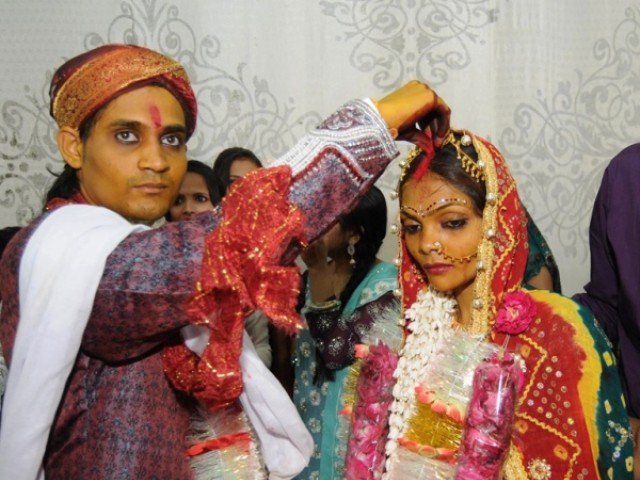
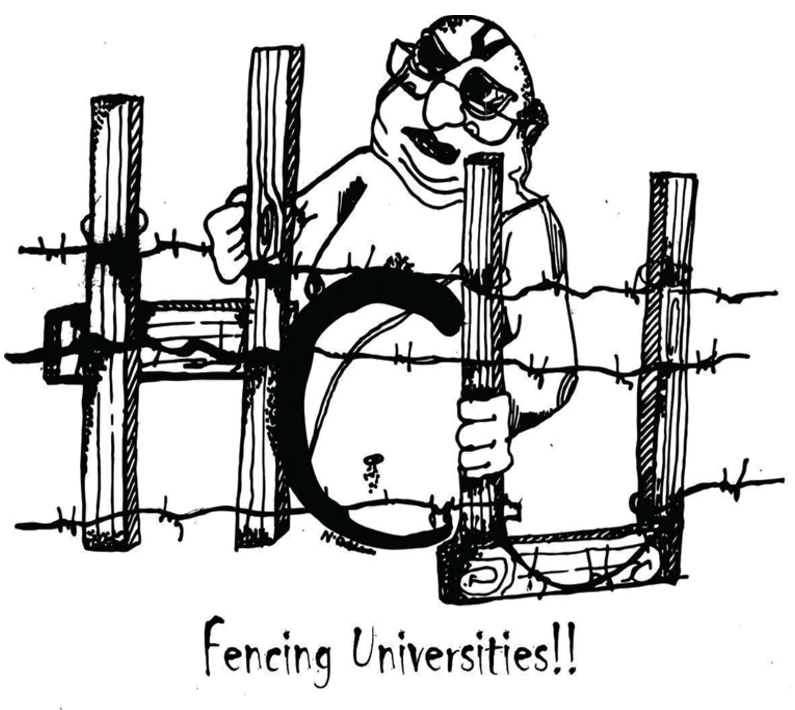
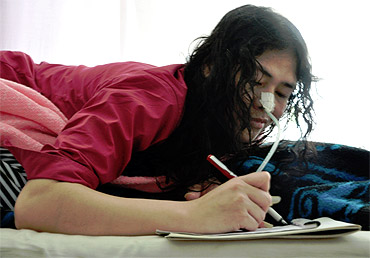

.png)
.png)
.png)



.png)




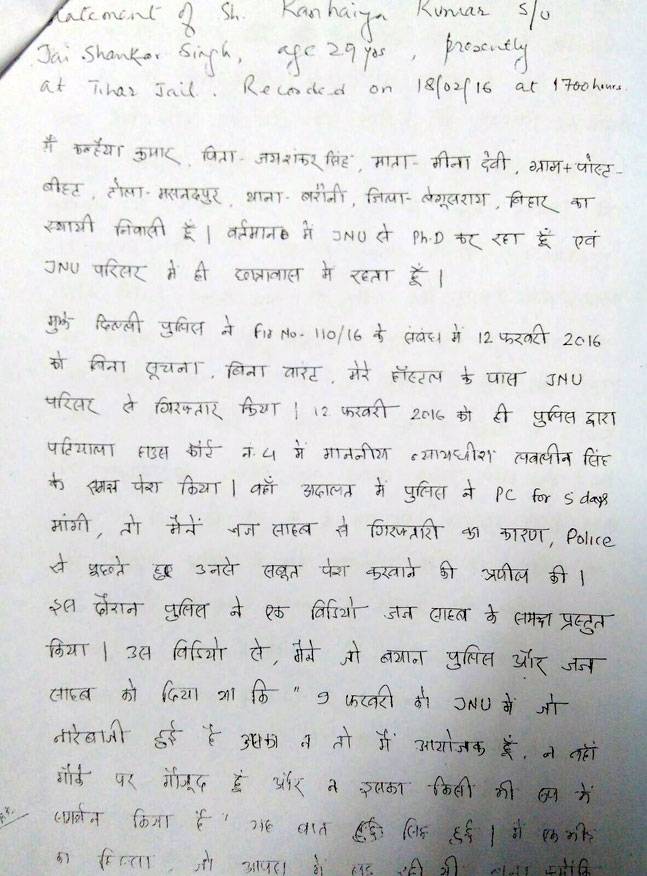
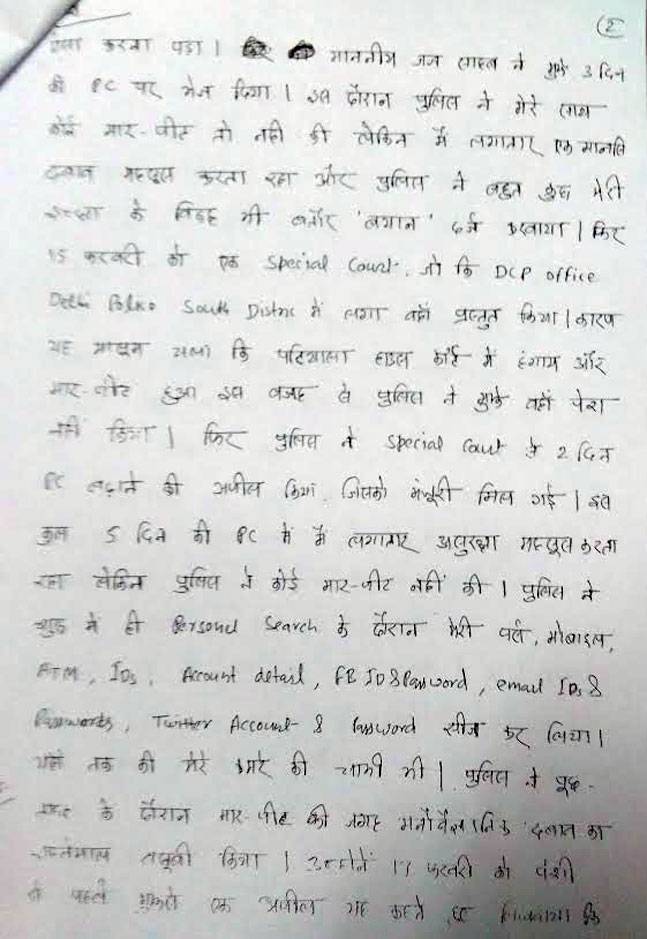
.jpg)
